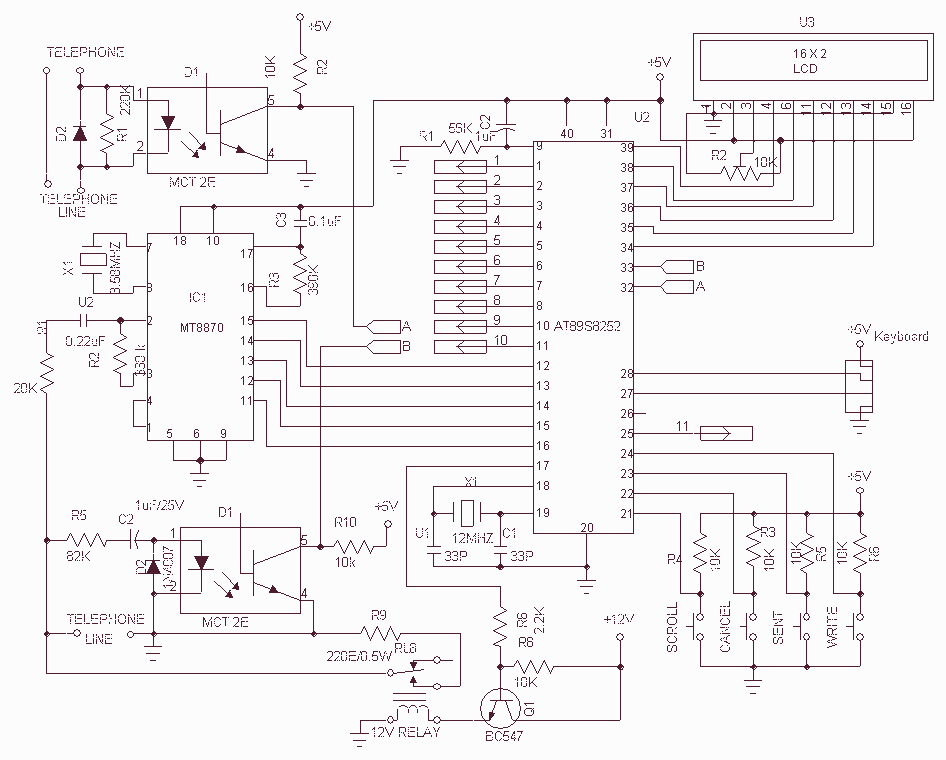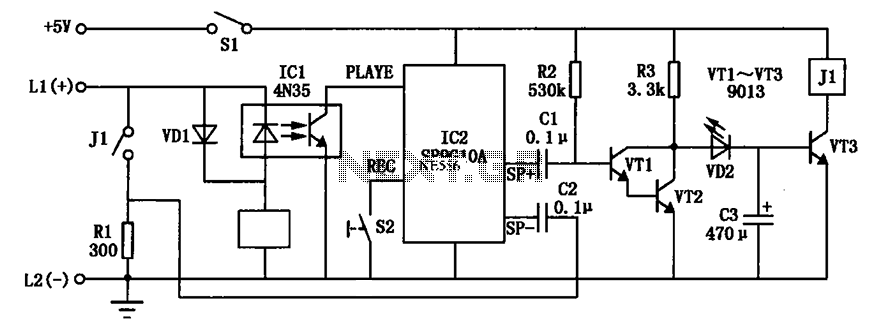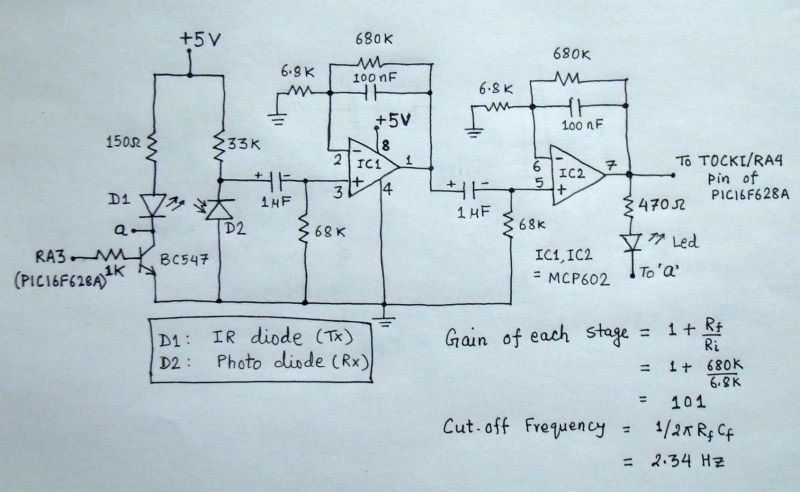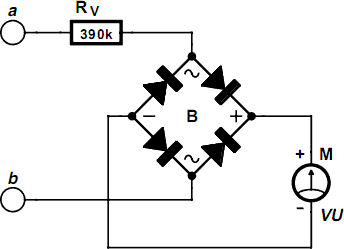
SMS through Telephone with AT89S8252

The main objective of this system is to transmit message or text through ordinary Land Line Telephone from one end (source) to another end (designation). This is achieved by the DTMF technology. It has two sections: one for editing the text and transmitting the edited text, and the other section consists of receiving the text message. The system works on the DTMF technology (Dual Tone Multiple Frequency). More: It involves several steps. They are DTMF decoding/Encoding process, Ring sensing, ON/OFF hook detection, Displaying the message in LCD. The above process is achieved by the microcontroller AT89S8252. Thus, the Microcontroller controls the whole system.
The described system utilizes Dual Tone Multi-Frequency (DTMF) technology to facilitate the transmission of text messages over a standard landline telephone network. The architecture is divided into two primary functional sections: a transmitter and a receiver.
The transmitter section is responsible for text editing and transmission. It incorporates a user interface that allows the input and modification of messages, which are then encoded into DTMF tones. This encoding process involves converting the alphanumeric characters of the message into corresponding DTMF signals that can be transmitted over the telephone line.
The receiver section is tasked with capturing and decoding the transmitted DTMF signals back into the original text message. This involves a DTMF decoder, which interprets the received tones and converts them back into a readable format. The decoded message is then displayed on an LCD screen for user confirmation or further action.
Key functionalities of the system include ring sensing, which detects incoming calls, and ON/OFF hook detection, which identifies the state of the telephone line (active or idle). These features are integral to ensuring that the system can operate seamlessly without interfering with normal telephone operations.
The entire system is controlled by the AT89S8252 microcontroller, which serves as the central processing unit. This microcontroller manages the DTMF encoding and decoding processes, oversees the user interface for text input, and handles the communication between the transmitter and receiver sections. The use of the AT89S8252 allows for efficient processing and control, making the system responsive and reliable in transmitting messages over traditional telephone lines.The main objective of this system is to transmit message or text through ordinary Land Line Telephone from one end (source) to another end (designation). This is get achieved by the DTMF technology. It has two sections one for editing the text and to transmit the edited text and the other section consist for receiving the text message.
The system works on the DTMF technology. (Dual Tone Multiple Frequency). It involves several steps. They are DTMF decoding/Encoding process Ring sensing ON/OFF hook detection Displaying the message in LCD The above process is get achieved by the microcontroller AT89S8252.Thus Microcontroller controls the whole system. 🔗 External reference
The described system utilizes Dual Tone Multi-Frequency (DTMF) technology to facilitate the transmission of text messages over a standard landline telephone network. The architecture is divided into two primary functional sections: a transmitter and a receiver.
The transmitter section is responsible for text editing and transmission. It incorporates a user interface that allows the input and modification of messages, which are then encoded into DTMF tones. This encoding process involves converting the alphanumeric characters of the message into corresponding DTMF signals that can be transmitted over the telephone line.
The receiver section is tasked with capturing and decoding the transmitted DTMF signals back into the original text message. This involves a DTMF decoder, which interprets the received tones and converts them back into a readable format. The decoded message is then displayed on an LCD screen for user confirmation or further action.
Key functionalities of the system include ring sensing, which detects incoming calls, and ON/OFF hook detection, which identifies the state of the telephone line (active or idle). These features are integral to ensuring that the system can operate seamlessly without interfering with normal telephone operations.
The entire system is controlled by the AT89S8252 microcontroller, which serves as the central processing unit. This microcontroller manages the DTMF encoding and decoding processes, oversees the user interface for text input, and handles the communication between the transmitter and receiver sections. The use of the AT89S8252 allows for efficient processing and control, making the system responsive and reliable in transmitting messages over traditional telephone lines.The main objective of this system is to transmit message or text through ordinary Land Line Telephone from one end (source) to another end (designation). This is get achieved by the DTMF technology. It has two sections one for editing the text and to transmit the edited text and the other section consist for receiving the text message.
The system works on the DTMF technology. (Dual Tone Multiple Frequency). It involves several steps. They are DTMF decoding/Encoding process Ring sensing ON/OFF hook detection Displaying the message in LCD The above process is get achieved by the microcontroller AT89S8252.Thus Microcontroller controls the whole system. 🔗 External reference





